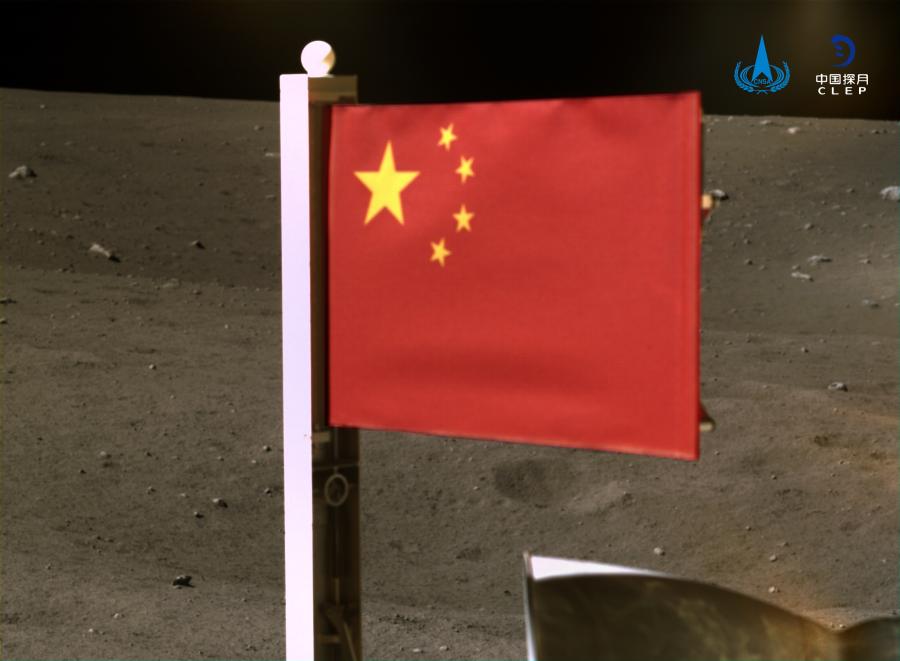Unfurling China's flag on moon
 0 Comment(s)
0 Comment(s) Print
Print E-mail Xinhua, December 5, 2020
E-mail Xinhua, December 5, 2020
The China National Space Administration on Friday released images showing China's national flag unfurled from the Chang'e-5 probe on the moon.

The images were taken by a panoramic camera installed on the lander-ascender combination of the probe, before the ascender blasted off from the moon with lunar samples late Thursday.
In one of the images, a robotic arm to collect lunar samples can be seen next to the flag.
On Dec. 15, 2013, color images showed the Chinese flag on the country's first moon rover Yutu, the first time the five-star red flag had been pictured on an extraterrestrial body.
Unlike the flags in China's previous lunar missions, the flag on Chang'e-5 was made of real fabric, rather than a spray coating. Chinese engineers and technicians revealed the advanced engineering behind the special flag.
A flag made from traditional fabrics would most likely lose color and disintegrate in the harsh lunar environment of abrasive dust, unfiltered cosmic rays and solar flares.
The flag must also be as light and compact as possible, as the spacecraft has very little room for anything more than scientific equipment.
Last but not least, how to make the flag stay perfect en route to the moon and look good on camera?
The flag team from China Aerospace Science and Industry Corporation Ltd. chose a scroll design, so the flag unfurls smooth and flat and not wrinkled and drooping.
It took them more than a year to find a new composite material that could stand the harsh environment and be dyed in China's vivid national colors. After being rolled up, the fabric will not stick together in temperatures ranging from 150 degrees Celsius to 150 degrees below zero. The flag made from the fabric only weighs 12 grams.
Li Yunfeng, director of the flag system, said the flag system used a mechanical structure that has been applied to the unfolding of solar panels on satellites and spacecrafts. The structure also makes the system weighing no more than 1 kg.
At the top is a hollow ball structure to fix the flag. Engineer Huang Min and lathe operator Liao Guangheng were inspired by Gashapon capsule toys in making it so light.
A flag represents the dignity and honor of a country, said Huang and Liao: "We have to make sure it's spotless and infallible."
A detonator unfurls the flag. To make sure it unfurled in one second sharp, the team simulated the lunar environment with a massive temperature difference between day and night, and carried out dozens of tests.
Liu Haigang, a veteran milling machine operator, said the parts he was responsible for were the most difficult challenge of his career.
He said he felt so proud when he finally put the finished pieces in the box as it was like looking at a work of art.
"When it lands on the moon, I'll tell my grandson 'Grandpa made this'."
China's Chang'e-5 probe was launched on Nov. 24, and its lander-ascender combination touched down on the north of the Mons Rumker in Oceanus Procellarum, also known as the Ocean of Storms, on the near side of the moon on Dec. 1.
After the samples were collected and sealed, the ascender of Chang'e-5 took off from the lunar surface late Thursday, and is expected to carry out unmanned rendezvous and docking with the orbiter-returner in lunar orbit, an unprecedented feat.
Chang'e-5 is one of the most complicated and challenging missions in Chinese aerospace history, as well as the world's first moon-sample mission in more than 40 years.






Go to Forum >>0 Comment(s)